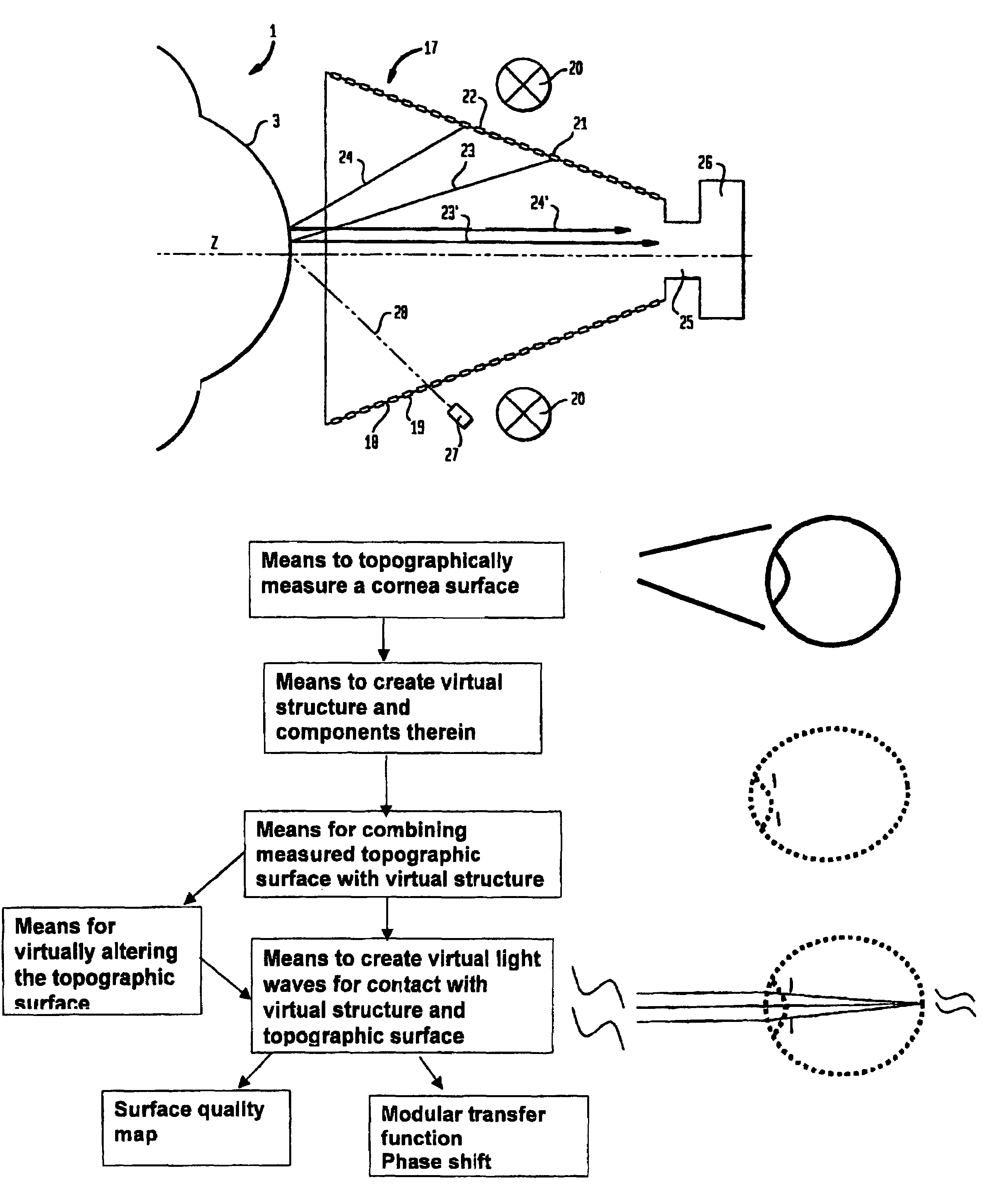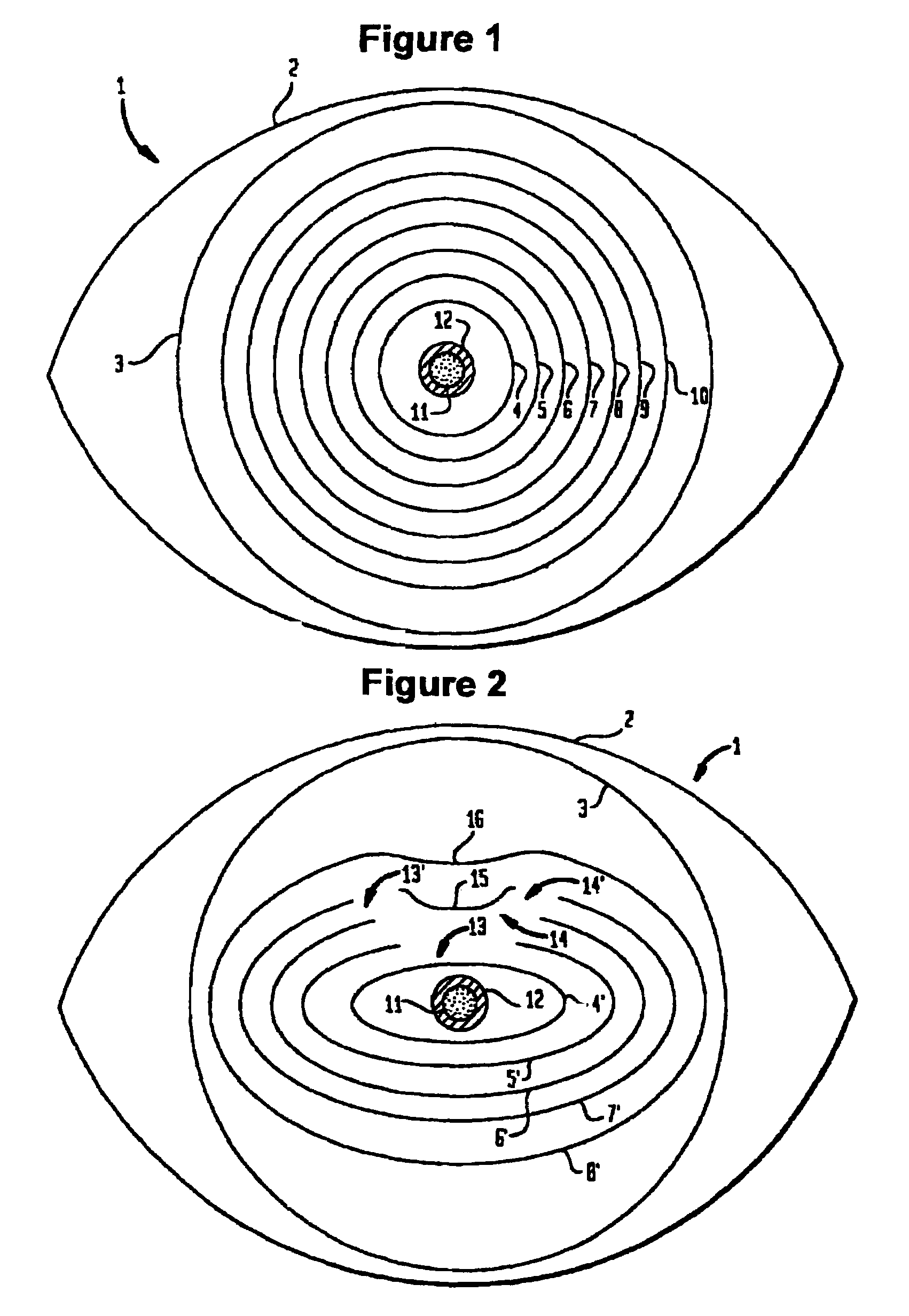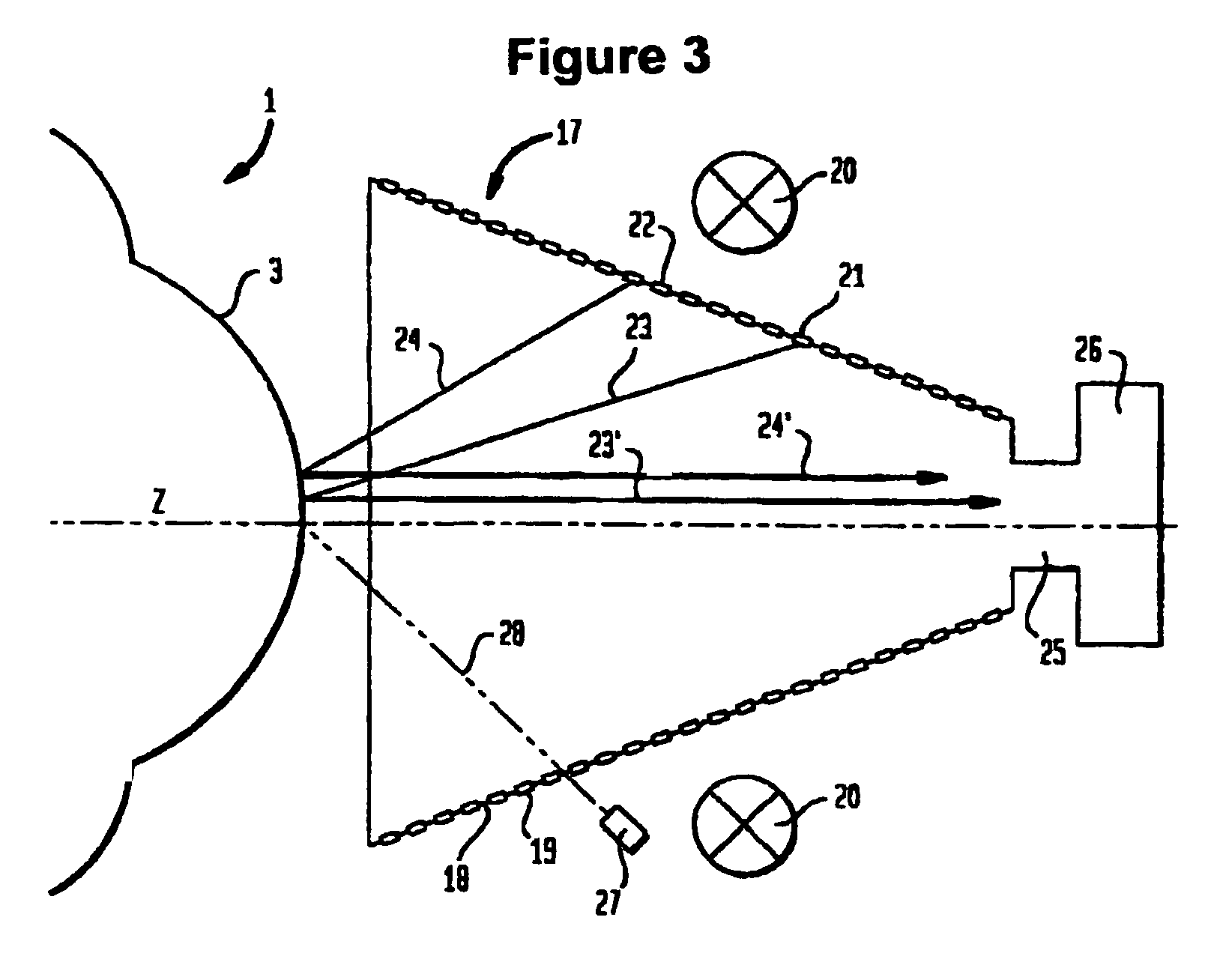Selective corneal aberrometry
a technology of aberrometry and selective cornea, applied in the field of surface profiling, can solve the problems of inconvenient or detracting, inconvenient insertion of foreign objects on or in the eye, and the need for time-consuming procedures, and achieve the effect of accurately representing the topography of the corneal surfa
- Summary
- Abstract
- Description
- Claims
- Application Information
AI Technical Summary
Benefits of technology
Problems solved by technology
Method used
Image
Examples
example i
[0093]A standard 4.5D PRK myopia correction with an optical zone diameter of 6.5 mm, treated with an Apex plus (Summit, USA), was used to illustrate the obtained corneal aberration map (CAM), shown in FIG. 6, which combines the two graphs and surface quality map of FIG. 5. The aberration map is divided into four sub charts including, a radius map, surface quality map, contrast graph and phase shift graph. At the lower left of the CAM, the distribution of radii is shown which indicates a homogenous distribution. In the upper left of the CAM, the surface quality map shows a central dark gray area (normally a colored amp) which indicates, quantitatively, the optical aberration prevailing in a normal 20 / 20 eye having a diameter of 4.2 mm after the 4.5D PRK. The upper right graph shows “contrast” as a function of sinus wave frequencies and indicates that contrast decreases rapidly for lower frequencies. The horizontal line represent, in this graph, the physiological threshold and the int...
PUM
 Login to View More
Login to View More Abstract
Description
Claims
Application Information
 Login to View More
Login to View More - R&D
- Intellectual Property
- Life Sciences
- Materials
- Tech Scout
- Unparalleled Data Quality
- Higher Quality Content
- 60% Fewer Hallucinations
Browse by: Latest US Patents, China's latest patents, Technical Efficacy Thesaurus, Application Domain, Technology Topic, Popular Technical Reports.
© 2025 PatSnap. All rights reserved.Legal|Privacy policy|Modern Slavery Act Transparency Statement|Sitemap|About US| Contact US: help@patsnap.com



